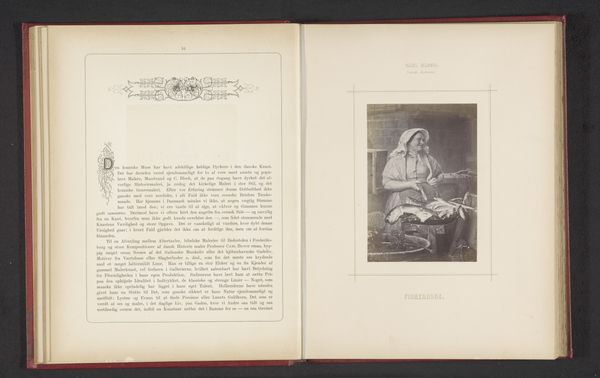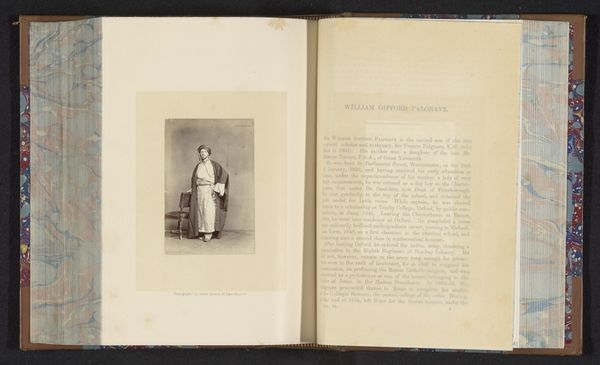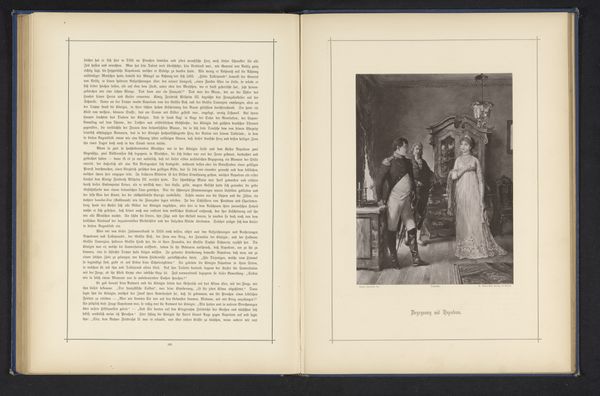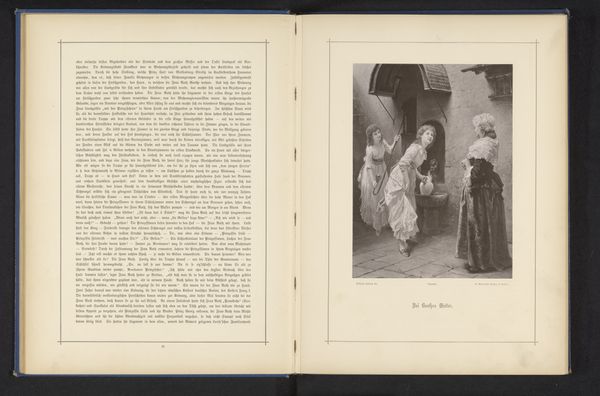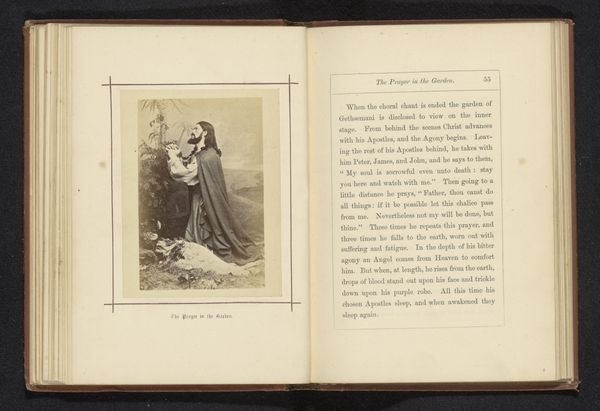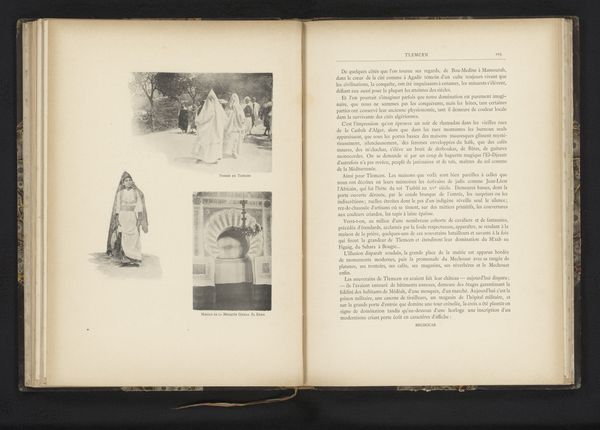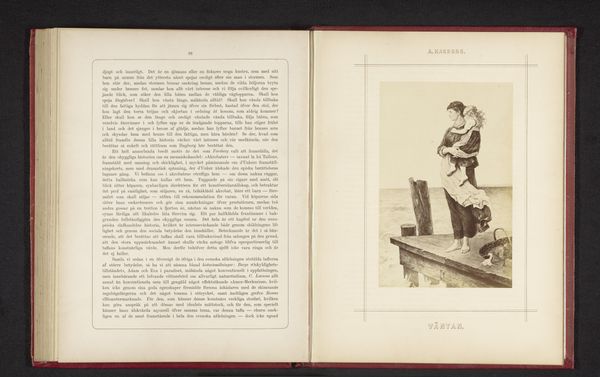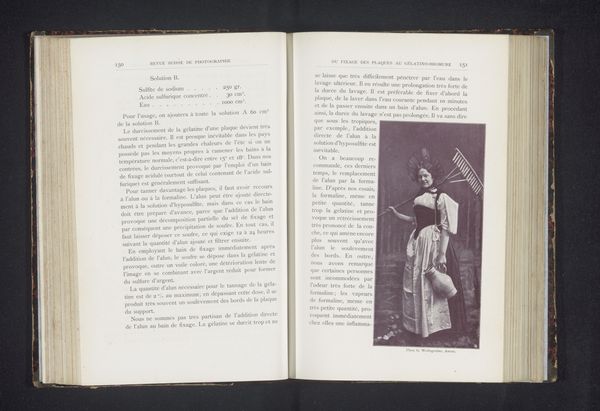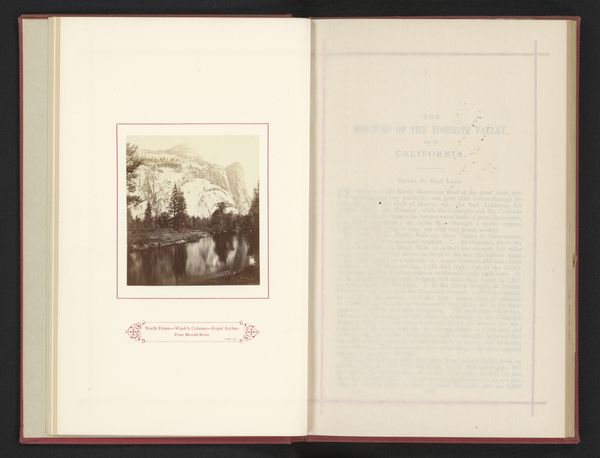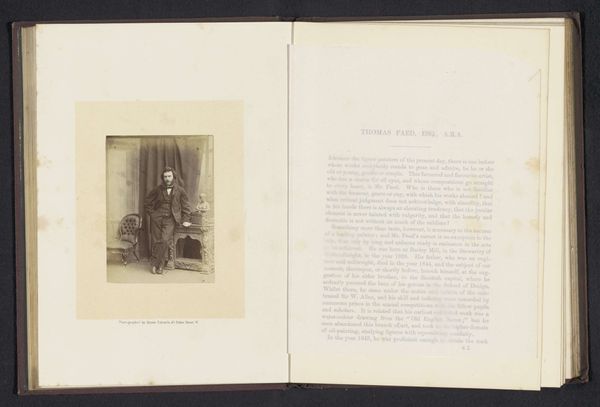
Fotoreproductie van een schilderij van een zittende vrouw met een schoffel door Hugo Salmson before 1879
0:00
0:00
Dimensions: height 182 mm, width 127 mm
Copyright: Rijks Museum: Open Domain
Editor: This is a photographic reproduction of a painting, before 1879, by Hugo Salmson, showing a seated woman with a hoe. It's really striking how the image emphasizes the texture of the woman’s clothing and the woven basket behind her. What stands out to you in this piece? Curator: Immediately, I’m drawn to the materiality of this image. The photograph itself, reproduced in this book, is the product of specific industrial processes, labor, and decisions. But even prior to that, there's the depicted painting – a representation of labor in the form of a peasant woman, most likely romanticized, based on the time and “style” of the print, a woman holding her tools of production, the hoe. This highlights the hierarchy of materials, labor and class at play within the depicted image and its physical representation. Consider how the materials available and the labor involved would impact its production, distribution, and even its interpretation. Editor: That’s a perspective I hadn't considered. I was so focused on the aesthetic of the Romanticism tag. How does thinking about materials change our view of the artistic intent? Curator: The Romantic gaze often obscured the realities of working-class life, but by interrogating the materials and the means of production, we confront that obfuscation directly. This allows us to analyze whose labor is visible, whose is not, and to what ends art is produced. Who would have owned this book and seen the original image? What socioeconomic class might she come from, given the state of Sweden's political economy and labor practices at this time? Editor: So, by focusing on the tangible aspects of the artwork and its creation, we can peel back layers of social commentary that might otherwise remain hidden. Curator: Precisely. It pushes us to question the narrative presented and unearth the realities embedded in the artistic process and consumption. Editor: This has broadened my understanding immensely. It’s amazing how much can be gleaned from considering the material realities surrounding a work of art. Curator: Indeed, viewing art through a materialist lens offers a richer, more nuanced engagement with both its historical context and its contemporary relevance.
Comments
No comments
Be the first to comment and join the conversation on the ultimate creative platform.
